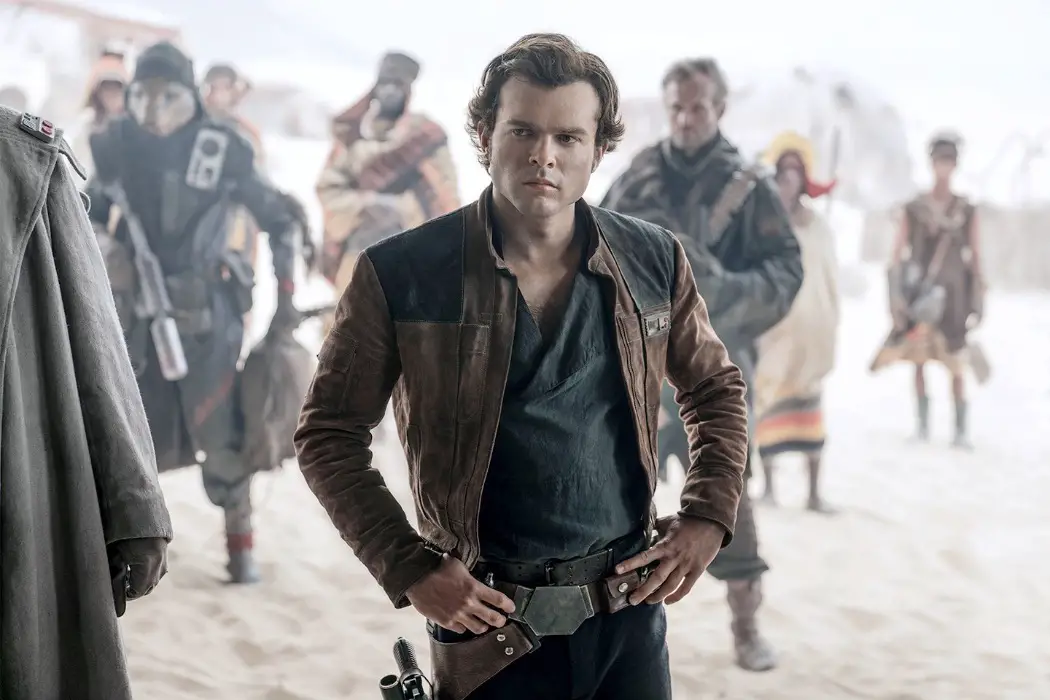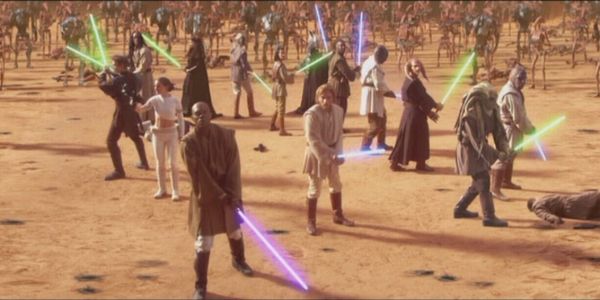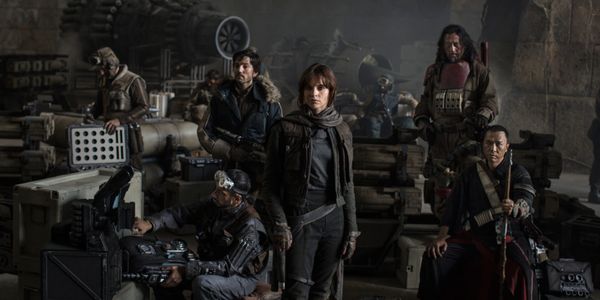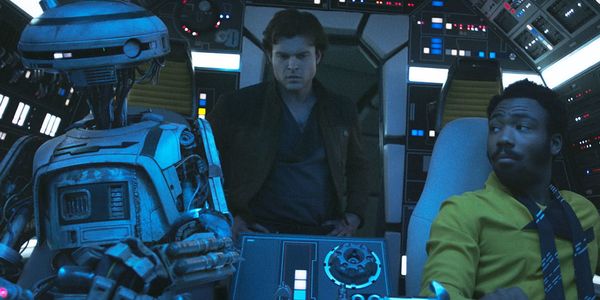SOLO & How STAR WARS Solved Its Prequel Problem

A writer in Australia, Sean used to be a TEFL…
Before the Disney acquisition, the words ‘Star Wars prequel’ was like a curse that you would only wish upon your worst enemy. They were synonymous with hubris, failure, and shoddy filmmaking. And, to an extent, that connection was correct. The Star Wars prequel trilogy of movies were the apex of disappointing follow-ups to a major movie franchise until The Hobbit trilogy came along, though those movies haven’t left as much of a mark on the cultural landscape as the Star Wars ones did.
Now, however, we find ourselves in a world where there are new Star Wars movies every year and of the four already released, two are sequels and two are the dreaded P-word. And the thing is, these new prequels are good. They aren’t weighed down by the negatives that sank the prequel trilogy and they are exciting, fun, and entertaining movies. So how has Star Wars fixed its prequel problem? First, we need to look at exactly what it is that wasn’t working in the first place.
The Problem Prequels
There are tons of articles and YouTube videos lambasting, defending, and attempting to fix the prequels. Each gives myriad reasons why the movies failed or are secret masterpieces. For me, the main reason I dislike these movies changes from movie to movie. I think The Phantom Menace is annoying, Attack of the Clones is empty, and The Revenge of the Sith is too little too late. However, I’m not a die-hard prequel hater.
I think Phantom Menace has some moments where it throws off the many millstones around its neck to become something awesome, and I think Revenge of the Sith, some truly terrible dialogue aside, is actually pretty good. However, as a trilogy, the movies are ultimately disappointing due to shoddy plotting, a lack of main character, a reliance (at least early on) on slapstick, and a misunderstanding of what a prequel is for.
A prequel needs to tell a complete, entertaining story at the forefront and the other stuff, the origins of characters and things, needs to simply be the window dressing for that story. It’s not hugely different from a sequel. A good sequel continues a story by showing what happens next but that is not its sole function. It also needs to be a new complete story too, which just so happens to be a continuation.

The problem with the prequels is that the prequel is the story. The plot of all three movies is basically in service of Anakin’s fall to the Dark Side and the rise of the Empire. However, this is a story that we know to be inevitable and really, it is the reason we are watching the movies. However, by itself and over three movies, it is not a compelling narrative. Don’t get me wrong, Ian McDiarmid’s Palpatine work in the prequels is the best thing about them and as a background plot they work wonders.
The problem is that in the foreground we have a story which should be about Obi-Wan and Anakin and how the latter fell to the Dark Side and the former blamed himself. Instead, the characters keep getting separated and we’re forced to watch them bumble around until Anakin abruptly turns evil. Clones and Sith are essentially story-less and as much as George Lucas tries to give Obi-Wan little side quests, they aren’t very interesting, and they detract from the main story. They also leave Anakin, especially in Clones, trapped in a soft focus love story that is meant to sell us a great romance but instead comes across as immature and silly.
The Clone Wars animated series manages to show how the above can be done well by pairing Obi-Wan and Anakin as contentious sibling characters and showing them in action so we get to see Obi-Wan’s sometimes patronising teaching and Anakin’s rage and casual stance to violence. The inevitability of Anakin’s fall is still there but it is entangled in strong plots and interesting stories so it adds flavour instead of being the main focus.
Of course, the problem of inevitability is a problem with all prequels, especially the more recent ones from Disney-owned Star Wars.
The Newbies
Rogue One and Solo are the two most recent prequels to come out of Lucasfilm/ Disney. And while both have their detractors (though some of those detractors are from the group of idiots who hate Star Wars now because it is run by Kathleen Kennedy (a woman?!?!)) they are two fun, entertaining movies. In the build-up to both movies, there was a lot of talk about how necessary they were and also how fun they could be when we know that, in Rogue One’s case, the Death Star plans will be found and, in Solo’s case, Han will meet Chewie, Lando, and make the Kessel Run in less than twelve parsecs. Again, the problem of inevitability.
I would argue though that this sense of knowing what’s going to happen is not just something native to prequels. Surely everyone going to see Iron Man or Doctor Strange knew that by the end of the movie the cynical, goatee’d guys at the beginning of the movie were going to be costumed heroes by the end. When they announced Man of Steel, there wasn’t an outcry of ‘What’s the point? We know he’s gonna be Superman by the end of it!’. I would say it’s the same principle.
Many of the big tentpole movies we go and see these days come with a built-in knowledge about certain things that are definitely going to happen, which is why when Infinity War ended the way it did the cinema I was in was full of people who were completely shell-shocked by seeing something unexpected.

With the new prequels though, the filmmakers have found a way to give you that inevitability and make it entertaining using two different methods.
With Rogue One, the rebels will definitely get a hold of the Death Star plans. We know this because it’s the plot of A New Hope i.e. getting those same plans to Yavin IV so the rebels can attack the Death Star. However, to keep it interesting, they don’t give us any familiar characters in the main group. This means that first, we are not confident of how many of them will survive to see the end of the movie, and second, any stories they have are not ones we’re familiar with.
The movie also presents us with something we’re familiar with, the Rebellion, and paints it in a new light. The Rebellion we’ve seen is all derring-do and heroics, while Rogue One shows us the grittier side of assassinations and shooting informants in the back. Unlike the prequel trilogy, we’re presented with something brand new and a cast of expendable characters. The inevitability of finding the plans is moot if you come to like a bunch of characters who could get killed off at any moment.

Solo is the flip of that. The inevitably at the heart of that movie is the relationships between the characters. We know Han will meet Chewie and Lando and that those three will survive the adventures one way or another. In that way the movie is actually more akin to a superhero origin movie than a Star Wars movie, in that we are given a character who begins one way: a street urchin just trying to survive, and who ends another: a bit more seasoned and cynical with a new ship and new co-pilot/best friend.
It’s not a seismic character shift by any stretch of the imagination but in comparison to something like Ant Man, in which the lead goes from a thief to a thief who can shrink, it is par for the course with this type of movie. With movies like this, the fun is in the journey, not the destination. That comes with the sequels when the character is established and can start having some fun without the need to set up who they are.
Solo: Final Thoughts
A way in which the modern prequels have succeeded is matched by the way the original trilogy and the newer sequels have and continue to succeed. The prequels are bogged down with too many Jedi characters, at the expense of normal, relatable ones. Much has been said of the Han Solo effect when we’re given a character who is the audience surrogate, learning about this mystical religion with a slight sneer as though he’s letting us know that we can have some fun with what we’re watching.
With the prequel trilogy there are too many moustache twirling villains, stern senators, and emotionless Jedi so the audience can’t break into the movie. I guess you could boil it down to a simple problem: in the prequels, there is one character who comes into the events one step behind everyone else, who asks a lot of questions, and is an outsider to the politics and Jedi stuff. This character is essentially the audience surrogate and this means that the Han Solo of the prequels is Jar Jar Binks.
Let that sit with you for a moment.
The newer prequels aren’t perfect but they are rousing, fun, Star Wars movies that help to expand the mythology of the franchise and give us glimpses of this big, wide galaxy far, far away. The original prequels also aren’t the worst thing that has ever happened to cinema, but they are flawed and in need of strong plots to help get across their, admittedly very cool, story of Anakin becoming Darth Vader. As we move forward, and more and more Star Wars prequels are announced, let’s hope Lucasfilm and Disney can keep making the former without falling into the pitfalls that hobbled the latter.
Are the new prequels an improvement on the old ones? Tell us your thoughts in the comments below!
Does content like this matter to you?
Become a Member and support film journalism. Unlock access to all of Film Inquiry`s great articles. Join a community of like-minded readers who are passionate about cinema - get access to our private members Network, give back to independent filmmakers, and more.
A writer in Australia, Sean used to be a TEFL teacher and is now an academic consultant. He has been published in The Big Issue, Reader's Digest, Talk Film Society, and Writer Loves Movies. His favourite movie is The Exorcist and he prefers The Monster Squad over The Goonies. He is also the co-host of the Blue Bantha Milk Co. YouTube channel.













